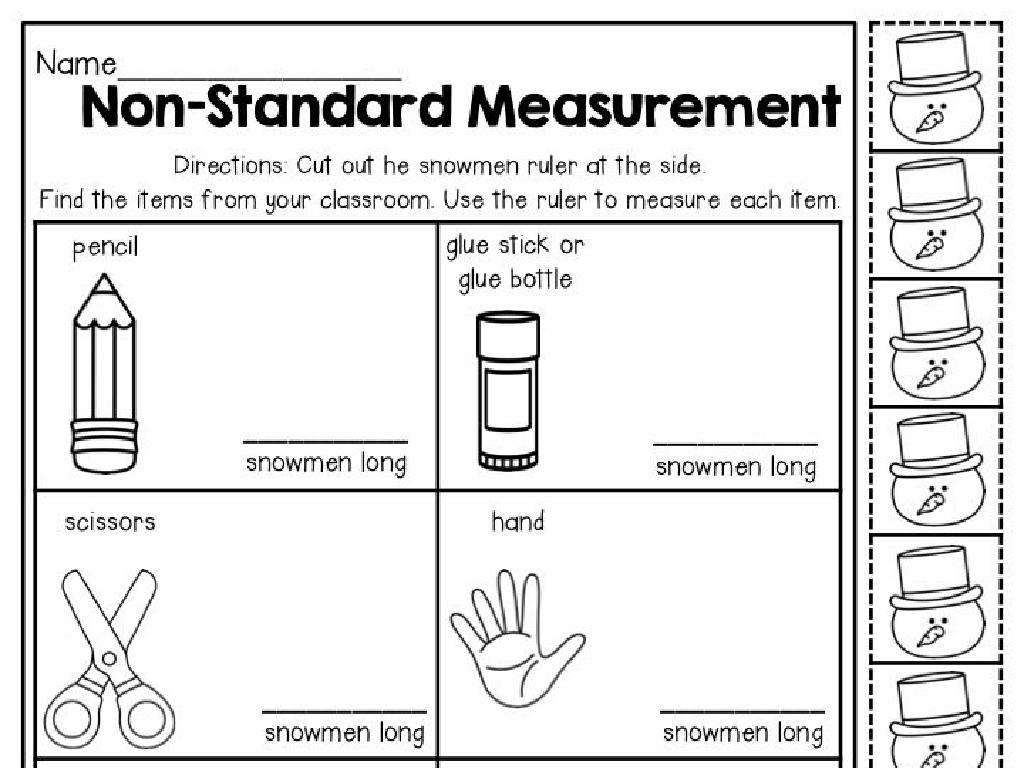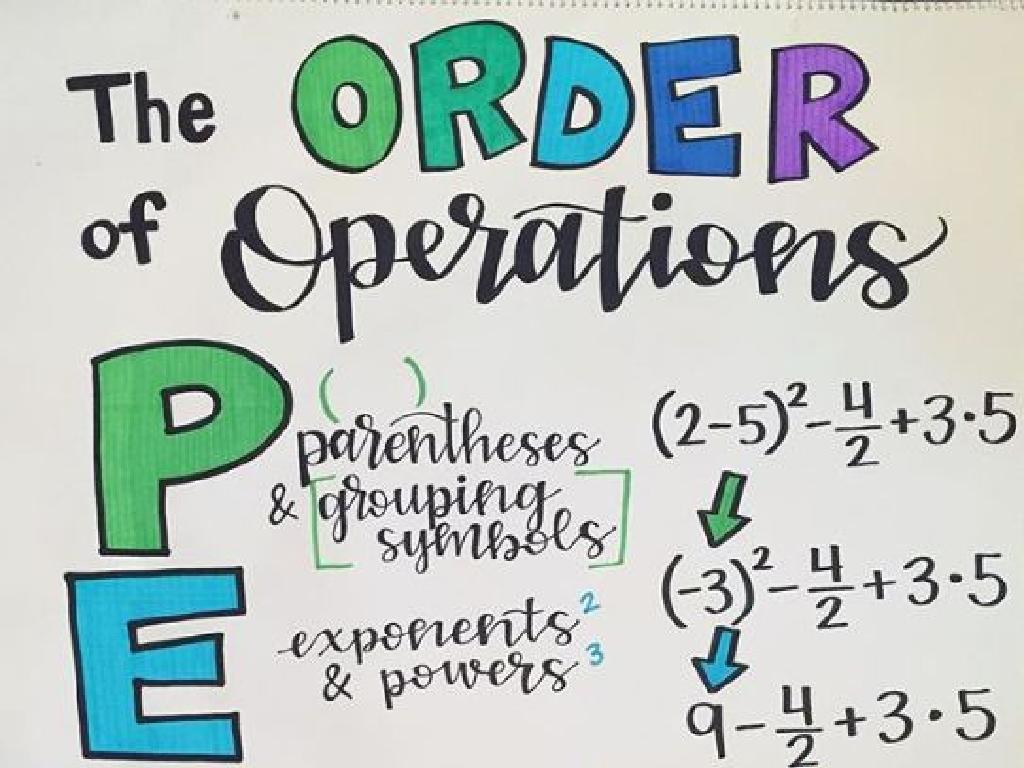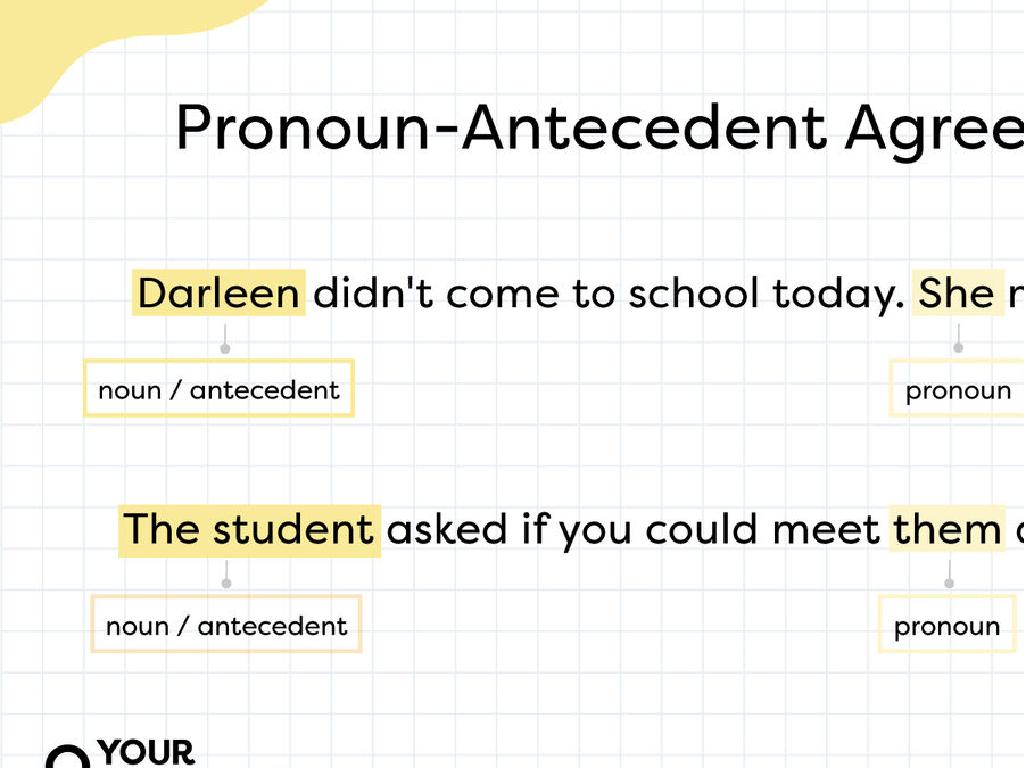Choose Between Subject And Object Pronouns
Subject: Language arts
Grade: Seventh grade
Topic: Pronoun Types
Please LOG IN to download the presentation. Access is available to registered users only.
View More Content
Subject vs. Object Pronouns
– Pronouns & their roles in sentences
– Pronouns take the place of nouns to avoid repetition
– Subject pronouns as sentence subjects
– Subject pronouns: ‘I’, ‘you’, ‘he’, ‘she’, ‘it’, ‘we’, ‘they’
– Object pronouns in the predicate
– Object pronouns: ‘me’, ‘you’, ‘him’, ‘her’, ‘it’, ‘us’, ‘them’
– Significance of correct pronoun usage
– Using correct pronouns ensures clarity and accuracy in communication
|
This slide introduces the concept of subject and object pronouns, which are essential components of sentence structure in English. Subject pronouns are used when the pronoun is the subject of the sentence, doing the action. Object pronouns are used when the pronoun is receiving the action. It’s crucial for students to differentiate between the two to construct grammatically correct sentences and communicate effectively. Provide examples of sentences using both types of pronouns and highlight the importance of choosing the right pronoun to maintain clarity in writing and speech. Encourage students to practice by identifying and using subject and object pronouns in their own sentences.
Understanding Pronouns
– Pronouns replace nouns
– Examples: he, she, it, they
– ‘He’ for a boy, ‘she’ for a girl, ‘it’ for an object, ‘they’ for a group
– Pronouns function as nouns
– Subject vs. Object pronouns
– ‘He’ (subject) threw the ball, ‘him’ (object) caught it
|
This slide is a brief refresher on the concept of pronouns, which are words that take the place of nouns to avoid repetition and simplify sentences. Provide examples of pronouns and ensure students understand that pronouns can perform all the functions of nouns within sentences. Highlight the difference between subject pronouns (who is doing the action) and object pronouns (who is receiving the action). Use simple sentences to illustrate this point. Encourage students to identify pronouns in sentences and determine whether they are used as subjects or objects. This foundational understanding will be crucial as they learn to choose the correct pronoun based on its function in a sentence.
Subject Pronouns in Sentences
– Definition of subject pronouns
– Pronouns that act as the subject
– List common subject pronouns
– Examples: I, you, he, she, it, we, they
– Usage in a sentence
– ‘She is riding a bike.’ – ‘She’ is the subject pronoun
– Practice identifying them
|
This slide introduces the concept of subject pronouns, which are pronouns that take the place of the subject in a sentence. The subject is who or what the sentence is about. Provide a list of common subject pronouns for the students to memorize. Use simple sentences to illustrate how subject pronouns are used in place of a noun. Encourage students to practice by identifying subject pronouns in sentences and creating their own examples. This will help them understand the role of subject pronouns in sentence construction and improve their grammatical skills.
Understanding Object Pronouns
– Object pronouns in sentences
– Used as the object of a verb or preposition
– List of object pronouns
– Includes: me, you, him, her, it, us, them
– Usage in a sentence
– Example: ‘The teacher called him.’
|
This slide aims to clarify the concept of object pronouns for seventh-grade students. Object pronouns are used in a sentence when the pronoun is receiving the action of the verb, rather than doing the action. Provide a list of object pronouns for students to memorize. Use simple sentences to illustrate how object pronouns function within the context of a sentence. Encourage students to create their own sentences using object pronouns to reinforce their understanding. During the lesson, engage the class in identifying object pronouns in various sentences and discuss why a particular pronoun is used in each case.
Comparing Subject and Object Pronouns
– Identifying subject and object pronouns
– Subject pronouns are ‘I, you, he, she, it, we, they’; Object pronouns are ‘me, you, him, her, it, us, them’
– Subject pronouns before verbs
– ‘He’ runs fast – ‘He’ is the subject pronoun, performing the action
– Object pronouns follow verbs or prepositions
– Give it to ‘me’ – ‘Me’ is the object pronoun, receiving the action
– Practice with examples
– ‘I’ kicked the ball to ‘her’ – ‘I’ is subject, ‘her’ is object
|
This slide aims to clarify the difference between subject and object pronouns for seventh-grade students. Begin by explaining that pronouns take the place of nouns and can serve different functions in a sentence. Subject pronouns are used when the pronoun is the doer of the action, while object pronouns are used when the pronoun is receiving the action. Provide clear examples showing the position of these pronouns in relation to verbs and prepositions. Encourage students to practice by creating sentences using both types of pronouns and identifying their roles. This will help them choose the correct pronoun when writing or speaking.
Let’s Practice: Subject vs. Object Pronouns
– Identify pronouns in sentences
– Determine pronoun types
– Is it doing the action (subject) or receiving it (object)?
– Practice changing pronouns
– Swap ‘he’ with ‘him’ or ‘she’ with ‘her’, does the sentence still make sense?
– Maintain original sentence meaning
|
This slide is designed for a class activity to reinforce the lesson on subject and object pronouns. Students will first identify pronouns within given sentences. Then, they will determine whether each pronoun is acting as the subject of the sentence (doing the action) or the object (receiving the action). Afterward, students will practice changing the pronouns in the sentences while ensuring the meaning remains unchanged. This exercise will help solidify their understanding of pronoun usage. For the teacher: Prepare sentences with clear subjects and objects for the students to work with. Consider having students work in pairs to discuss their choices. Provide guidance as needed and be ready with additional examples if students require more practice.
Class Activity: Pronoun Swap
– Pair up and write sentences
– Swap with another pair
– Identify the pronouns used
– Look for ‘he’, ‘she’, ‘it’, ‘they’ (subject) vs ‘him’, ‘her’, ‘it’, ‘them’ (object)
– Discuss pronoun choices
– Why use ‘he’ instead of ‘him’? Context matters!
|
This activity is designed to reinforce the understanding of subject and object pronouns through practice and peer collaboration. Have the students work in pairs to create sentences that include both subject and object pronouns. Once they have written their sentences, they will swap with another pair to identify the pronouns used in each other’s sentences. This peer review process encourages students to explain their reasoning and understand the grammatical rules that determine pronoun usage. As a teacher, facilitate the discussion by asking questions and providing examples to clarify any confusion. Possible activities for different pairs could include creating sentences based on pictures, using pronouns in different tenses, or correcting sentences with incorrect pronoun usage.
Conclusion & Homework: Pronoun Practice
– Recap: Pronoun importance
– Homework: Write a short story
– Incorporate both pronoun types
– Use subject & object pronouns
– Ensure they fit grammatically
– Share your story next class
|
As we conclude, remind students of the importance of choosing the correct pronoun to maintain clarity in communication. For homework, students are tasked with writing a short story that demonstrates their understanding of subject and object pronouns. Encourage creativity, but emphasize the correct usage of pronouns within their writing. In the next class, students will have the opportunity to share their stories, which will help reinforce their learning and allow for peer feedback. Provide examples of subject and object pronouns and how they are used in sentences to serve as a reference for their homework.





